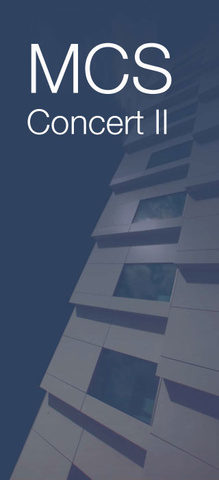
Center for New Music Season 51 Concert Series, Concert Events V - VIII
MidWest Composers Symposium
UI hosting composers from the
Universities of Iowa, Michigan, Indiana and CCM
The University of Iowa, School of Music Concert Hall
Concert II: Saturday, November 5, 10:00 am
|| download program ||
Program
A cajón is a box-shaped Peruvian instrument that is normally played by tapping it on its sides to make percussive sounds. My original idea for this piece was for a cello to play along with a cajón, but then I wondered what if the cello were the cajón itself.

Nina Shekhar (b. 1995) is a senior at the University of Michigan pursuing dual degrees in Music Composition and Chemical Engineering. Her works have been featured by the National Flute Association and in the Detroit REVIVAL Project in collaboration with dance troupe ArtLab J. She is a recipient of the 2015 ASCAP Morton Gould Young Composer Award. Nina is also a versatile performing artist, studying flute with Amy Porter and performing as a pianist with the Lublin Philharmonic. Nina currently studies with Michael Daugherty and has previously studied with Bright Sheng, Evan Chambers, Kristin Kuster, and James Hartway.
II. Breathing Down the House
Spencer Haynes, piano
"A Brightness and a Quickening" was written for my friend, baritone David Tahere, for his first recital on the faculty of Lee University in Cleveland, TN. The texts are by Ashley Seitz Kramer, a poet whom I’ve had the pleasure to work with over the years, and feature a consistent theme of brightness, introspection and poignant vernacular language. Though the language is simple, the message is potent and complex. The musical materials mirror these texts in their simplicity, potency and buoyancy in order to show the very sincere, but subtle message inherent in each poem. The first movement, Final Curtain for the Cornfield, shows the struggle of creation, and the nurturing nature of the artist at work. Breathing Down the House appears under a different title “Variations on a Theme by Sorescu” in earlier versions, and the meditative quality of the text, a subtle theme and variation into a sort of wild daydream that brings us back to the original message, is married to the repetitive nature of the accompaniment and the overall form of the work.
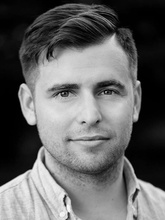
Nicholas Landrum (b. 1987) is a composer whose work focuses on the density and brevity of pitch and timbre as they relate to counterpoint and color. Recent recognitions include selection for performance at the Society of Composers Incorporated’s national conference, Composition Fellow for the MusicaNova Orchestra of Phoenix, AZ, commission by the North Coast Winds, a recent performance of an opera scene by the Indiana University New Music Ensemble, and appointment to the faculty of the Cleveland Institute of Music’s Young Composer Program. Nicholas is a current Associate instructor and doctoral candidate at Indiana University’s renowned Jacobs School of Music where he teaches composition, notation and instrumentation.
Leonardo Perez, viola
Xuan Kuang, piano
Ho Yin Kwok, conductor
In this piece a distinctive envelope of each one of the instruments served as a model to establish rhythmic, dynamic and texture parameters. These sound shapes were segmented, reversed, and rearranged and their underlying characteristics were used in different sections of the work to create and transform the musical material.
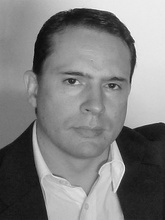
Carlos Toro-Tobón, a composer born and raised in Colombia, received his MA degree in composition from the Universidad EAFIT in 2011. Since 2005, he has been a professor of music theory and composition at the Universidad de Antioquia, Colombia, where also coordinated the music education program. In 2014 Carlos Toro-Tobón was granted a Fulbright scholarship to study in the U.S., and is currently pursuing a Ph.D. in music composition at the University of Iowa. His composition teachers have been, Andrés Posada S, Moisés Bertrán, Marco Alunno, Lawrence Fritts, Nomi Epstein, and Josh Levine.
Darron Carr, percussion
Surpris’d I was with sodayne heat, which made my hart to glowe
And lifting upp a fearefull eye to vewe what fire was nere
A pretty babe all burning bright did in the ayre appeare
Who scorched with excessive heate such floodes of teares did shedd
As though his floodes should quench his flames, which with his tears were fedd.
Alas, quoth he, but newly borne in fiery heates I frye
Yet none approach to warme their hartes or feele my fire but I.
My faultles brest the furnace is, the fuell woundinge thornes
Love is the fire and sighs the smoke, the ashes shame and scornes;
The fewell Justice layeth on and Mercy blowes the coales,
The metall in this furnace wrought are mens defiled soules
For which as nowe on fire I am to worke them to their good
So will I melt into a bathe to wash them in my bloode.
With this he vanisht out of sight and swiftly shronke awaye
And straight I called unto mynde, that it was Christmas daye.
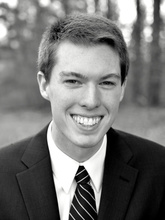
Jared Hedges' music has been performed throughout the United States and in Canada by musicians such as the JACK Quartet and Indiana University's contemporary vocal ensemble, NOTUS. His pieces have received awards from the Oregon Pro Arte Chamber Orchestra, the Holland Symphony Orchestra, the Music Institute of Chicago and Webster University. In 2014 his song cycle Nellie Bly at Blackwell's Island was featured at the inaugural Source Song Festival, and in 2015 he participated in the Vancouver International Song Institute's Art Song Lab. Hedges holds bachelor degrees in music composition and English literature from Bethel University (St. Paul, Minnesota), and is currently pursuing a master's degree in composition at the University of Iowa. www.jaredhedges.weebly.com
I. Fiberoptic
II. Interlaced
Qianyi Fan, violin I
Alexi Whitsel, violin II
Julia Vicic, viola
Christy Oscar, violoncello
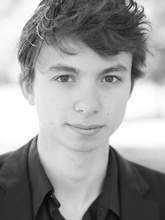
Interwoven uses rhythm, pitch, timbre and other musical elements to tell a musical narrative in two movements.
Ábel Esbenshade is a composer of primarily instrumental and vocal music. His work in other areas, such as photography and audio and video production, often inspire him and influence the form, use of timbre, and conceptual basis of his music. His music utilizes familiar musical gestures to orient and disorient listeners.
I.
II.
III. Italiano
IV. March
V. Maze of Lamentation
The music is a set of concise movements, some of which have traces to dance music. But each movement is also tinged with a feeling of post-ness. As if you are a ghost, returning to a place that everybody left long ago. Or thinking about something that no longer exists. The last movement specifically deals with how one can feel lost and disoriented after any sort of rejection. How, after such an experience, walls, real and illusionary, can become labyrinthine around you.
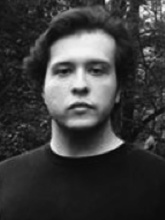
Daniel Zlatkin's music has been played by the Da Capo Chamber Players, The Orchestra Now, The Brass Project, the Bard Conservatory Orchestra, and members of the New Haven Symphony. His music was recently featured at the Music from Angel Fire festival. He performs regularly as a cellist, and has played with groups including the American Symphony Orchestra, New York Youth Symphony, and Contemporaneous. He is committed to musical outreach, and brought a team of musicians to Cali, Colombia to teach youth from 2014 to 2016. He currently attends the M.M. program in composition at the University of Michigan.
The Driftless Area of the Midwestern United States is a small patch of the continent that the glaciers forgot to flatten. Lined with rolling hills and bluffs, carved with deep river valleys, and dotted with quaint family farms, it is a uniquely beautiful corner of the country. I spent the summers of my girlhood in the heart of this region, in the tiny town of Kendall, Wisconsin (population: 472). This set of variations on the old Scandinavian hymn-tune “Jeg ser deg o Guds lam å stå” is my ode to this region. It is dedicated with love to the Michelson family, my relatives who have lived in this region since before Wisconsin achieved statehood.
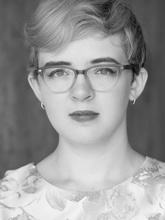
Composer and mezzo-soprano Patricia Wallinga specializes in writing and performing English-language art song, opera, and contemporary choral music. Her music has been performed across the continental United States, as well as in Europe. Wallinga’s 2014 extended song cycle for tenor and piano, Dreams in War Time, received a 2015 BMI Student Composer Award, and its companion choral cantata Portraits of Wartime won the 2013 NOTUS Student Composition Contest and was performed and recorded by IU’s elite contemporary vocal ensemble NOTUS, of which she is also a member. Originally from Naperville, IL, she is currently a senior at Indiana University, where she studies composition with Aaron Travers and voice with Jóhann Schram Reed.
From similar and complimentary pitch collections, two flutes embark down closely related paths of gradual transformation. Textural metamorphosis occurs in both voices congruently, yet at differing rates. This metamorphosis explores divergences in register, rhythmic character, density, and timbre. Likewise, both pitch collections are transformed through gradual reduction proceeded by reconstruction, until finally set A becomes set B, and vice versa. Antithetical to the prominence of homogeny in Cognatic, each voice is given a unique element (a motive, or a distinct type of gesture) that recurs aperiodically throughout the piece, functioning as an interruptive factor in an otherwise fluid stream of transformation.

Jacob P. Simmons (b. 1987) is currently pursuing his Ph.D. in music composition at the University of Iowa. He holds Masters and Bachelor degrees in composition from Belmont University and Cornerstone University respectively. Jacob's music has been performed by the JACK Quartet, and has been featured at the Midwest Composers Symposium and the Exchange of Midwest Collegiate Composers. Jacob is presently studying composition with David Gompper, and has previously studied with Josh Levine, Nomi Epstein, Lawrence Fritts, Bill Pursell, Mark Volker, and David Culross. Additionally, he has participated in masterclasses or received individual lessons with Louis Karchin, Michael Fiday, Elainie Lillios, Ofer Ben-Amots, Caroline Shaw, and David Lang.
Qianyi Fan, violin
Gabriel Viteri, violoncello
Spencer Haynes, piano
Six Miniatures was written in the spring of 2016. There are totally six movements in this piece. Each of them has its own characteristics. The first movement presents the motivic ideas of the piece. In the second movement, the music slows down, which contrasts with the first movement. The third movement gives out a sense of expression. In the fourth movement, again, the music slows down but in a different way. The fifth movement gives out a sense of energy. And the final movement is a recapitulation of all the previous materials. I do not want to go into details about what this piece is exactly about or how it is composed, because I believe different listeners listen differently. Therefore, feel to disagree any of these descriptions.
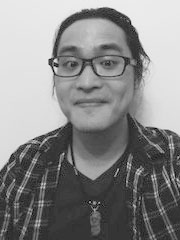
Lang enjoys composing all kinds of music. He likes to use different musical parameters contrarily or at an extreme level. Currently, he is exploring to bring hardcore rock or rap music into a chamber or orchestral music setting. Besides music, Lang has great passion for visual art as well.
Divergence explores quartal/quintal harmonies complicated by half-step and tritone relations between two pianos. The two instruments utilize quartal/quintal sets that first overlap with each other but then diverge to their own harmonic language. Cross-rhythms between the pianos dominate the ebb and flow of texture. Gestures are sometimes bittersweet, and sometimes aggressive, each punctuated by subito dynamic and articulative changes. The two pianos converge on overlapping harmonic languages to close the piece as it began, which as a whole can be seen as a cycle of divergence and convergence.
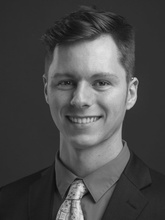
Nicolas Bizub and Arturo Fernandez, violas
Wei-Shuan Yu, violoncello
Marissa DiPronio, piano
Landscapes is a piece inspired by the beautiful scenery one sees when driving long distances in the United States. There are five ‘zones’ in the piece, four of which end with an arrival at a ‘landmark,’ and the last, which fades into the distance. Technically, each ‘zone’ is full of randomly repeated blocks of music that lead to a cue from the cello. This cue, followed by a declamatory statement from the cello and piano, signal the arrival and departure from each ‘landmark.’
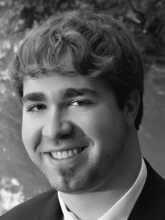
Mackenzie (Mack) Jacob LaMont (b. 1989) is expected to complete his DMA in music composition at the University of Cincinnati, College-Conservatory of Music in May of 2017. His composition teachers include John Berners, Michael Fiday, Joel Hoffman, and Douglas Knehans, and his percussion teachers include Paul Berns, James Culley, and Allen Otte. He holds prior degrees in composition and performance, and is an active music educator and owner/operator of a small music recording company.